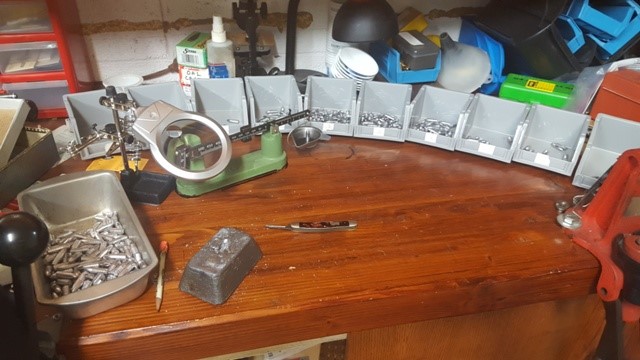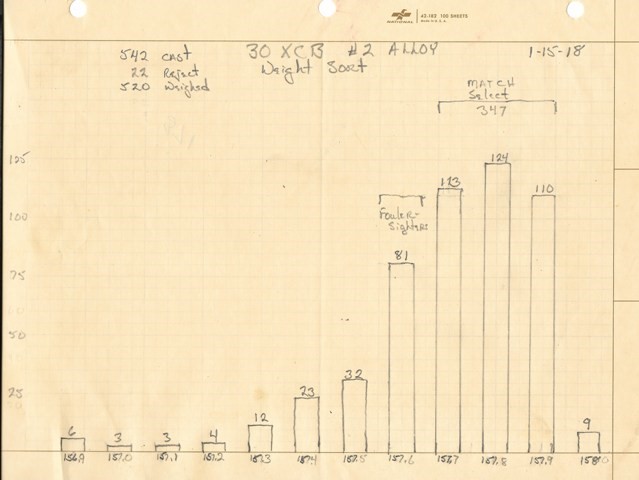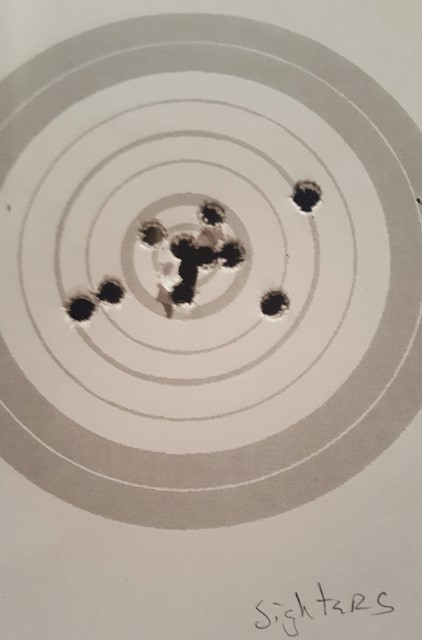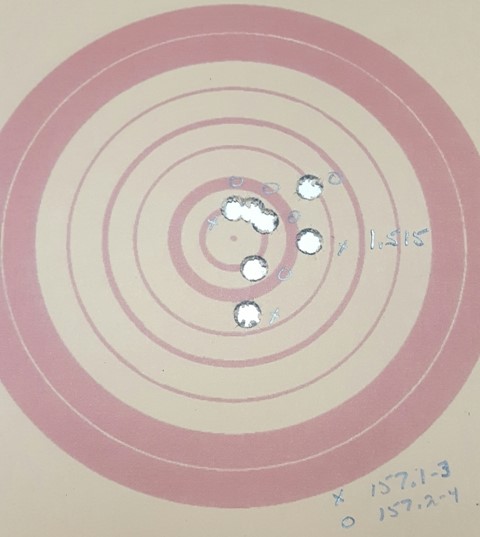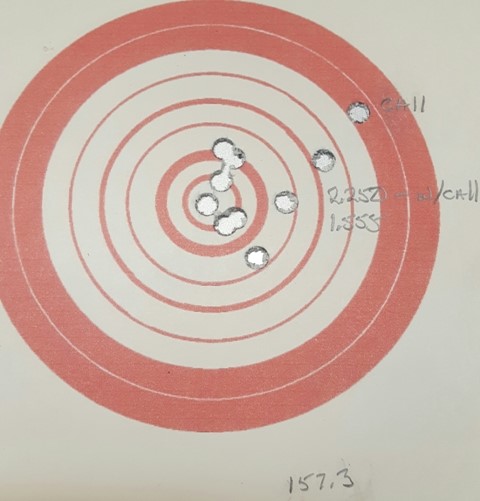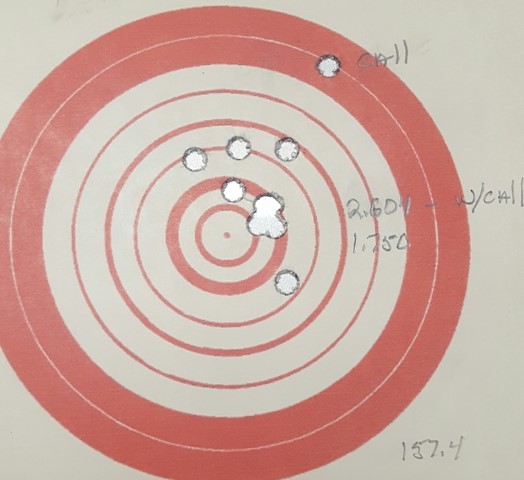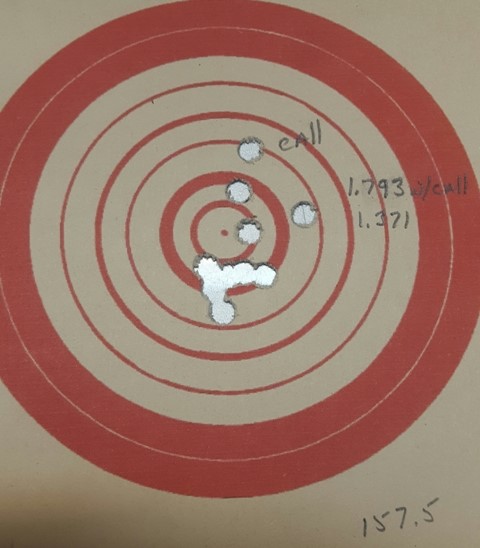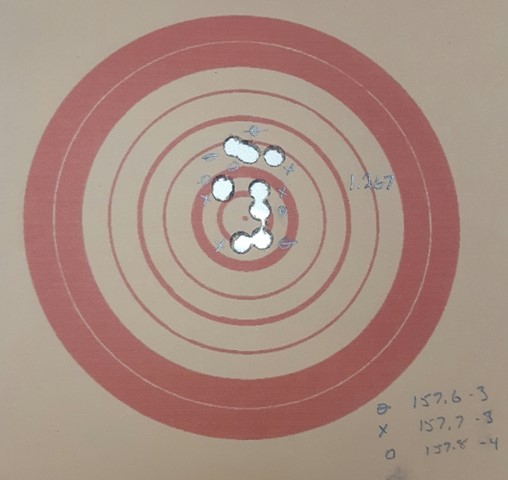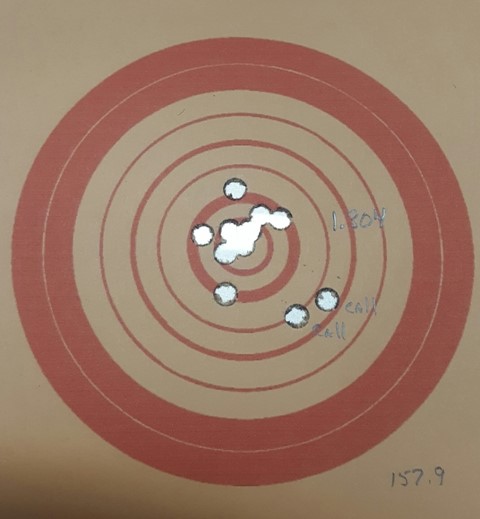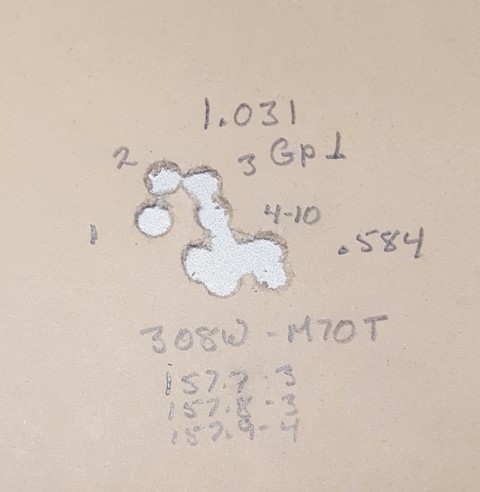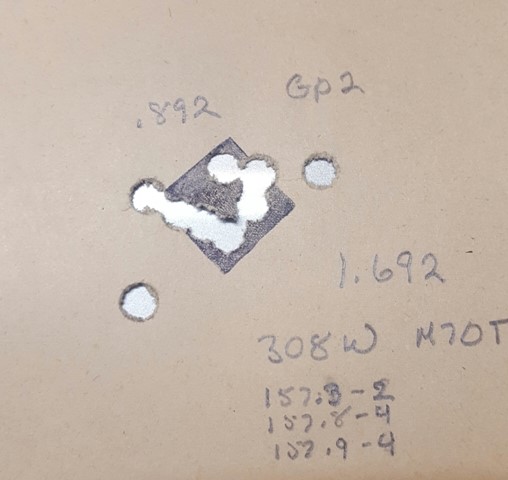All ballisticians know and understand the adverse affect an imbalance in a bullet, cast or jacketed, has on the bullet during flight. To provide an example let's look at what Mr. Lilja has to say. Please pay particular attention the bold highlighted 2nd paragraph. Mr. Lilja understands it, all other ballisticians understand it, many shooters understand it, I understand but some do not What is high lighted is a matter of ballistic fact.
A Look at Bullet Imbalance and Twist
By Daniel Lilja
Bullet imbalance--or more correctly, static imbalance--occurs when the axial center of gravity and center of form of a bullet are not concentric. It is easy to visualize the effect of this imbalance. As a bullet travels through a rifle barrel, it is being rotated about its center of form. When it exits the muzzle of the barrel, the center of rotation shifts from the bullet's center of form to its center of gravity. In mechanics the difference between these two centers is known as the radius of gyration. The bullet will travel in a roughly helical course, a corkscrew type path. Naturally the greater the divergence of the two centers, the greater will be the dispersion of the bullet from the point of aim.
As a bullet leaves the muzzle and is free to rotate about its center of gravity, if imbalanced it will diverge from the axis of the barrel at an angle that is dependant on the twist rate of the rifle barrel. The deviation angle = arctan (2e*Pi/T) where: e is the radius of gyration and T is the twist rate.
In the November, 1965 issue of THE AMERICAN RIFLEMAN, author E.H. Harrison describes the effects of this imbalance and its relation to rifling twist rate. In his article he derives a formula that calculates the amount of imbalance that will cause one minute of angle (MOA) target dispersion for a given twist rate. The formula is E=.000046(T), where T is the rifling twist rate and E is the amount of imbalance to cause one MOA divergence.
A computer program in Basic was written using the above formula to calculate the effects of a change in twist rate or the amount of bullet imbalance. The figures in the table are from this program. As can be seen from the table, the faster the rate of twist, the greater is the target dispersion. In this example, the amount of bullet imbalance is .0001". The twist rates are from one turn in 8 inches to one turn in 16 inches in one half-inch increments. These rates will cover 95% of the commonly used twists. The values under the heading "Expected `MOA' Accuracy" are just that. With a bullet with only .0001" imbalance, the best grouping at 100 yards that could be expected are these figures in inches for that given twist rate.
These `MOA' values are directly related to both the twist rate and the amount of imbalance. If either is doubled, the amount of target dispersion will also be doubled. From the chart it can be seen that an eight twist barrel will cause twice the amount of dispersion (.272 MOA) as a 16 twist barrel (.136 MOA). Likewise, if the amount of bullet imbalance were doubled, all the values under the `MOA' column would also be doubled.
It is obvious from this chart that two aspects of shooting are quite important. Namely, that we use high quality bullets and the slowest twist that will adequately stabilize that bullet.
It is easy to specify what twist barrel we want to use. It is more difficult, however, to determine the amount of imbalance our favorite bullet has. An obvious cause that comes to mind, in lead core bullets, is bullet jackets that have runout in the wall. It is not quite that simple, though. Let's take the example of a jacket that has .0003" runout, not uncommon in many jackets meant for benchrest shooting. That amount of runout does not translate into .0003" of bullet imbalance.
If the densities of lead and jacket material were the same, the amount of jacket runout would have little or no bearing on balance. They are not the same, though. The Machinery's Handbook, 22nd edition, lists the specific gravity of copper as 8.89 and that of pure lead as 11.34. Lead, then, is about 28% denser than copper. It follows then, that with a jacket with .0003" runout, the area of the jacket wall, on the thin side, that should have been occupied by jacket material has been increased in density by 28%. This will cause a shift in the bullet center of gravity away from the center of form by .28 x .0003" or .000084" (eighty-four millionths).
The above value is the approximate radius of gyration. This is an over-simplification but is probably a close approximation of the amount of imbalance. There are formulas in mechanics that allow for the calculation of the true amount of imbalance but they would require exacting measurements of each jacket and bullet shape. Obviously, greater amounts of jacket runout would cause a greater shift in the two centers.
It was mentioned above that if the densities of jacket material and lead were the same that it would matter little on the balance of the bullet. This is true as far as it goes, but it is known that when the ogive is formed on a bullet, if the jacket is not uniform, the nose of the bullet will yield to the thinner side causing to some extent static imbalance and irregular geometry.
There are other possible causes for bullet imbalance. When a bullet is fired from the cartridge case, it is under a great deal of pressure. Assuming that the barrel groove diameter is no larger than about .0005" over bullet diameter, the bullet will obturate in the barrel, conforming now to the diameter and geometry of the barrel. In the case of an oversized barrel, the obturation is probably not the full length of the bearing surface of the bullet. With a barrel that is the same size as bullet diameter--or undersized--the obturation will be complete and more of the bullet will assume the geometry of the barrel.
All is fine with this situation as long as the barrel is uniform. If the geometry of the barrel is such that the groove depths are not the same, the bullet has now gained static bullet imbalance from the barrel that it did not previously have. There are other possible causes for static imbalance. The lead core may have a flaw, such as a void or air trapped between the jacket and core during core seating. The results are the same.
Another cause of imbalance is a barrel chamber that is not in alignment with the axis of the barrel. The effect is that the bullet enters the rifling misaligned, cocked in relation to the rifling. Again the bullet has gained imbalance from the barrel. In his article, Harrison lists this cause as "yaw" in the barrel.
Besides the above-mentioned cause for imbalance from jacket wall runout, the bullet can obtain imbalance from a swage die that is not geometrically perfect. The bullet may come out of the die less than round, or with an ogive that is not in line with the rest of the bullet. Harrison lists this type of cause as "dynamic imbalance". It also can cause static imbalance.
Concealment is not cover.........









